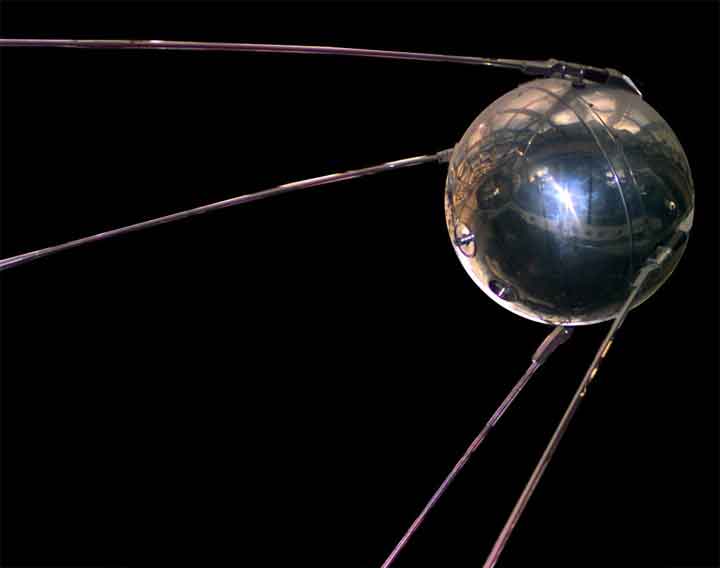1957 Russian Launch Sputnik
On October 4th, 1957 the Soviet Union launched the first satellite into space. The engineers waited until the satellite had made one orbit around the earth and then informed the Soviet Premier that the launch was successful. The satellite, with a diameter of 22 inches, marked the beginning of the space age. The Soviets successful launch also marked the beginning of the space race between the US and the Soviet Union. The launch spurred the US to intensify it’s efforts to launch its own satellite.
On July 29, 1955, the United States announced that it was planning to launch a satellite during the International Geophysical Year which was going to last from July 1, 1957, until December 31, 1958. This spurred the Soviet Union to develop their satellite. On January 30th, 1956 the Soviet government gave the green light to develop a satellite. The satellite was designated as Object D. It was hoped that the satellite would be able to take measurements on the atmosphere as well as observe magnetic fields and cosmic rays. However, when it became clear that developing this satellite might take too long, it was decided to use a simpler satellite that became known as PS-1.
To launch the satellite the Soviets wanted to use their new ICBM missile which was designated R-7 Semyorka. The first three launches of the R-7 failed. The fourth one was successful however it was unable to be useful as an ICBM as its dummy warhead disintegrated on reentry. However, it was concluded that the R-7 could be used to launch a satellite.
PS-1 became Sputnik 1, and it was 23 inch in diameter (585 millimeters). It weighed 184 lbs and included a radio transmitter. On October 5th the Sputnik was launched. After the satellite circled the earth once the scientist announced it was a success. Sputnik circled the globe for three months and made 1,440 orbits of the planet before burning up on reentry.
The successful launch of the Sputnik was a coming out party for Soviet science and spurred the US to develop its space capability.
 >
>